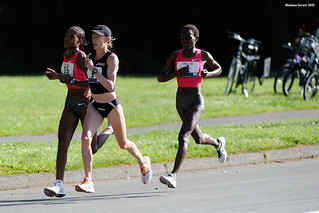Every day I get loads of spam. It’s generally found in the comment section and trust me when I tell you people try all kinds of clever ways to get their links, about their own products, sites or services up on my site (and every site). As I have mentioned before, all I have to is post something about football to get spammed with all kinds of male sexual enhancement drugs. Recently I blogged about testosterone—you can only imagine.
Once in a while I get mail from someone who bothers to take the time to explain his or her story and I consider accepting the link. This person wrote an article about a topic not often talked about and emailed me to ask if I would consider putting it on the site. Since he bothered to be human about it, I am doing just that. Additionally, I am once again tired of hearing my own “voice.” Who knows, you may be struggling with this very problem…this one is for the female runners….
Incontinence – a rarely spoken about problem for runners. I have NO idea about the catheters that he mentions. Thankfully, for me, this is not a problem…so far……..
